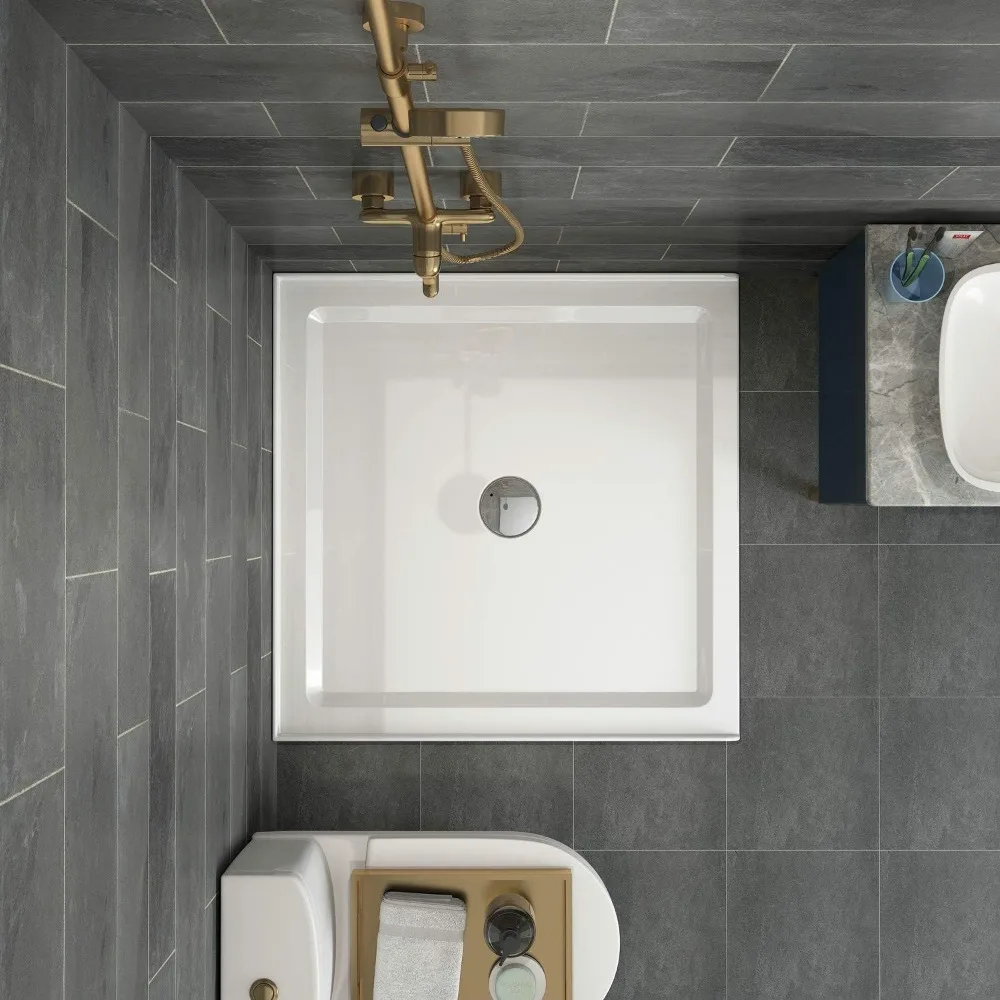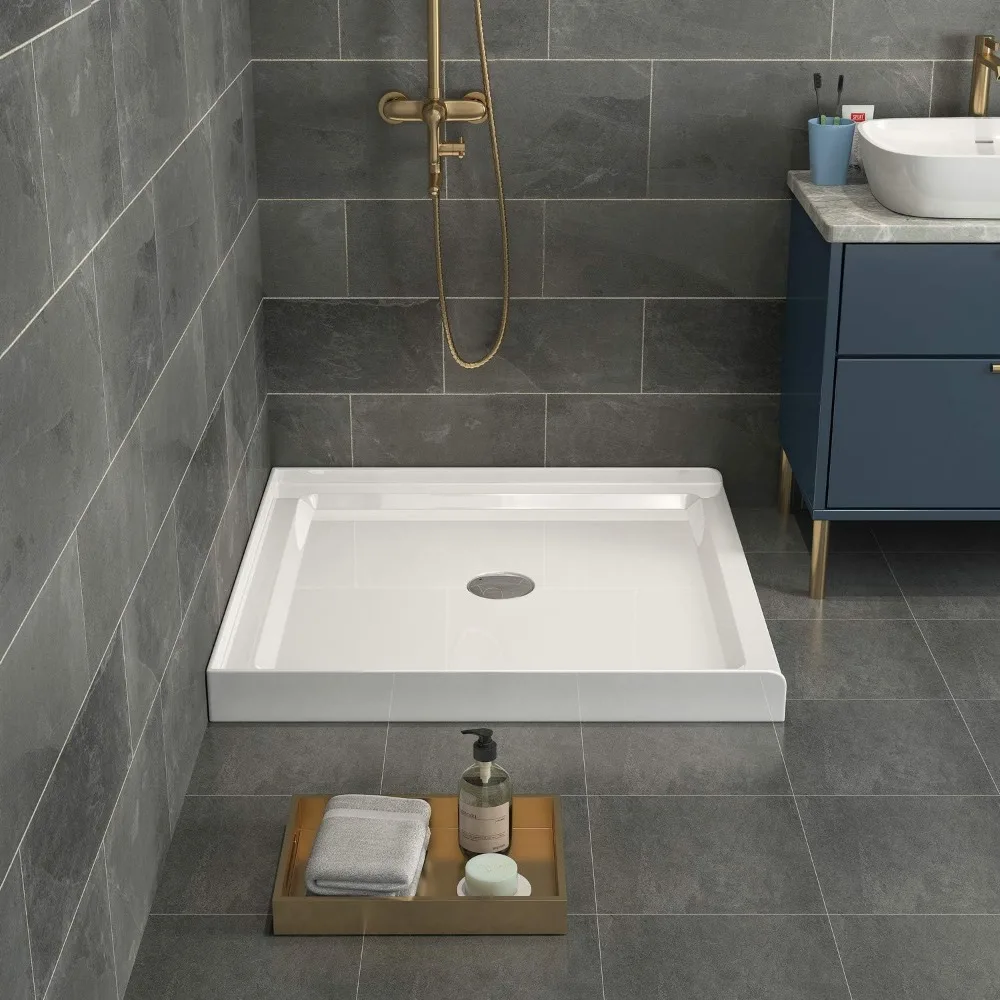Introduction to Shower Pan Construction
Constructing a shower pan is a critical part of bathroom renovation. A well-built shower pan prevents leaks, manages water flow, and forms the foundation for beautiful tile work. Whether you choose the traditional Water In/Water Out (WIWO) system or a modern sealed system, the goal is always the same: a watertight base for your shower area. In this guide, we’ll explore the basics of building a reliable shower pan. We’ll look at different methods and materials, and the advantages and disadvantages of each approach. By understanding these fundamentals, you’ll be better equipped to make the right choices for your bathroom build or remodel. Let’s dive into the journey of how to make a shower pan that’s built to last.

Traditional Method: Water In/Water Out (WIWO) System
Overview of the WIWO Shower Pan
The Water In/Water Out (WIWO) system is a tried-and-true method for making shower pans. This traditional approach involves a liner and mortar bed to manage water. It’s a method with decades of use and continues to be popular in many homes today. Understanding the basics of the WIWO system is key for anyone interested in how to make a shower pan that will stand the test of time.
Building a Traditional Shower Pan
Building a WIWO shower pan starts with laying a pre-slope mortar base. On top, install a flexible liner, like CPE or PVC, to catch water. Next, another mortar layer goes above the liner, pitching towards the drain. Lastly, tile gets installed over the mortar, creating the finish surface. A flood test ensures no leaks before completion.

Materials for the WIWO System
Primary materials for a WIWO shower pan include:
- Sand/cement mix for the mortar bed
- A rubber-like shower pan liner, often CPE or PVC
- A 3-piece clamping ring drain
Less commonly used today, but still relevant in some regions, are hot mops or metal pans made from copper or lead.
Advantages and Disadvantages of the WIWO System
Advantages include:
- Lower materials cost
- Proven track record over many years
However, these are some of the disadvantages:
- Requires skill and precision during installation
- More time-consuming than modern methods
- Not the best option for curbless showers
WIWO systems, when built correctly, offer dependable performance. But, the process demands careful attention to detail to avoid any costly mistakes.
Sealed Shower Systems Overview
Modern bathroom construction often utilizes sealed shower systems. These innovative solutions provide effective moisture management and cater to contemporary design preferences, especially in the context of creating sleek, curbless showers.
Construction of a Sealed Shower Pan
The construction of a sealed shower pan is relatively straightforward. Installers begin by laying a sloped bed, either of mortar or a preformed foam base. A thin, waterproof membrane gets bonded directly to this base, ensuring that water cannot seep through. Often associated with a bonded flange drain, the membrane connects with the drain seamlessly for efficient water evacuation.
Waterproofing Materials for Sealed Systems
Materials that ensure the watertight quality of sealed shower systems include:
- Bonded CPE or PVC membranes
- Foam bases, typically made from extruded polystyrene (XPS)
- Liquid or trowelable waterproofing for intricate shapes
With advancements, some systems now come with the waterproofing layer pre-attached to the foam pan, reducing installation complexity.

Advantages and Disadvantages of Sealed Systems
Advantages of sealed systems are numerous:
- Speedy installation process
- Less technical skill required
- Suitable for curbless shower designs
These systems save time and labor with simpler construction steps and the option for ready-made bases.
Disadvantages involve:
- Higher material costs
Although the initial investment is higher, the convenience and efficiency make sealed shower systems an attractive option for modern bathrooms. Taking into account both methods of construction, builders and homeowners can make informed decisions based on their specific needs and preferences.
Comparing WIWO and Sealed Shower Systems
When planning how to make a shower pan, both WIWO and sealed shower systems are excellent options. Each has its unique features that may appeal to different builders and installers based on specific project requirements or personal preferences.
Decision Factors for Builders and Installers
Choosing between a WIWO and sealed system involves several key considerations:
- Installation Experience: WIWO requires more traditional trade skills, while sealed systems are often easier for newer installers.
- Project Budget: The more budget-friendly materials of WIWO may be appealing, but the quicker installation of sealed systems can balance costs.
- Design Needs: Sealed showers fit curbless designs well, offering a modern finish. WIWO is more conventional but less versatile for curbless solutions.
- Longevity Expectations: WIWO has a long history of reliability, whereas sealed systems, although newer, offer strong waterproofing guarantees.
- Familiarity with Products: Familiarity with certain products or brands may influence material choice.
Overall, these factors can help determine the most suitable method for a given project.
Industry Acceptance and Recognition
Both WIWO and sealed system methods have their place in the industry. WIWO is recognized for its historical reliability, while sealed systems are noted for innovation and adaptability. The tile industry accepts both methods as effective for managing water in shower constructions. It’s crucial to follow the system-specific instructions to avoid failures, which most often stem from installation mistakes.
Builders should choose the method best aligned with their project demands, knowing that both have been tested and approved by industry standards.
Installation Tips and Best Practices
Building a shower pan requires careful planning and execution. Below, find key tips and best practices that can facilitate a successful project.
Essential Steps for a Successful Shower Pan Construction
For a shower pan that lasts, you must follow these steps:
- Measure the shower area accurately to ensure the pan fits snugly.
- Prepare the underlayment, ensuring it’s firm and level.
- Apply a pre-slope to guide water towards the drain before installing the liner.
- Choose a quality liner for WIWO or a top-notch membrane for sealed systems.
- Ensure the liner or membrane bonds well, leaving no gaps.
- Use a proper drain assembly, suited for your selected waterproofing method.
- Test for leaks with a flood test before tiling.
- Slope the final mortar bed appropriately and apply tiles evenly.
By following these essential steps, you increase the chances of constructing a reliable and durable shower pan.
Common Installation Errors to Avoid
Avoid these typical mistakes to prevent shower pan failure:
- Skipping the pre-slope, leading to water pooling beneath the liner.
- Poor liner or membrane installation, creating potential for leaks.
- Incorrect drain installation, which could result in improper drainage.
- Inadequate mortar mix or incorrect application, causing an uneven surface.
- Failure to carry out a leak test before finalizing the construction.
Paying close attention to each step in the process can minimize the risk of later issues. Remember, cutting corners or rushing through the installation can cause significant problems down the line.
FAQs: Addressing Common Questions and Concerns
When embarking on how to make a shower pan, there are often questions that pop up. Addressing these upfront can help avoid common pitfalls and ensure a smooth installation process.
Essential Considerations for Shower Pan Slope and Drainage
Proper slope and drainage are vital for a functional shower pan. Here’s what to keep in mind:
- Slope: Aim for a minimum slope of 1/4 inch per foot towards the drain.
- Consistency: Maintain uniform slope to prevent water pooling.
- Drainage: Use a quality drain assembly compatible with your shower pan technique.
- Pre-slope: Before installing the liner, a pre-slope ensures correct water flow.
Selecting the Right Materials for Your Shower Pan
Choosing the right materials is crucial. Here’s a quick guide:
- For WIWO: Opt for a durable liner like CPE or PVC and a strong sand/cement mix.
- For Sealed Systems: Pick a high-quality membrane and consider foam pans for ease.
- Adhesives: Ensure they’re suited for wet areas and match your system’s requirements.
- Tiles: Use ones rated for shower floors, as they need to handle moisture well.
By keeping these FAQs in mind, you’ll be better prepared to tackle your shower pan project with confidence.


